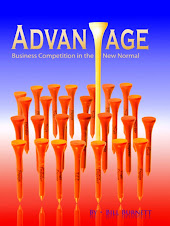In his book How the Mighty Fall... Jim Collins points out that eight of the eleven declining companies when to outside CEO’s while only one of the contrast thriving companies went outside for their CEO. Also in the research for Good to Great, 90% of the CEO’s who led their companies to ‘great’ came from inside the company. Then he says “Now you might be thinking ‘but wouldn’t companies in trouble need to go outside?’”

There are, of course great examples on either side. Collins points out Lou Gerstner who came from outside to turn IBM around. In my book I mention Grant Halverson who came from outside to engineer a spectacular turn around of a company in Australia. And there are plenty of others. Whether or not the board looks inside, or goes outside, is a symptom of trouble, not its cause.
Boards of directors are often poorly mixed together and fail in their primary responsibility. Their principle job is to ensure that the leadership in the company is building an environment of engagement. Highly engaged employees are the ones who drive spectacular results today while developing the engine for tomorrow. That is because, to foster engagement the leadership must empower and trust the workforce. Building and maintaining the corporate culture is the CEO’s foundational responsibility. It is culture that determines the level of trust, empowerment, and thus, engagement.
When this is done well, a company quickly realizes that the ‘right people on the bus’ are the people you already have. When you ask the question of a leader CEO “Is there someone inside the company who could take over if you dropped over dead in five minutes” he or she is likely to laugh and say “I’d prefer to retire, thank you very much!” but then can immediately point to two or three people in the organization who would stretch themselves into the role right now.
When an internal change in leadership happens it is always a stretch. A.G. Lafley at Proctor and Gamble had to stretch himself into that role very quickly. At Texas Instruments, Tom Engibous faced this stretch with no warning when his predecesor keeled over dead while on a business trip. Jack Welsh proudly talks about having to choose a successor from three equally capable internal people in GE.
People come up to or down to the level set for them by their environment. In any environment, leadership sets the fulcrum point for lifting people to their potential. In companies, that environment is the culture and the leader is the CEO. If the fulcrum point is set low people will not perform at their potential because they are unable to. If people are not performing at, or near, their potential, it is not possible to detect what that potential is.
If the existing culture fosters the level of empowerment already exists inside the company then it is much easier to pick an insider to take over the CEO role. That is why Collins found that good companies promote from within.






No comments:
Post a Comment